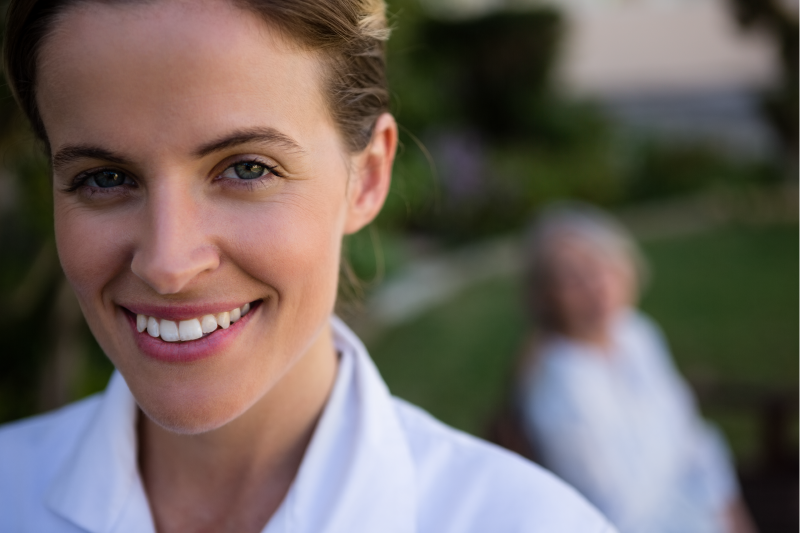- Cataracts are just an elderly thing (FALSE),
- Close-up tasks for your eyes will make your cataracts worse (FALSE),
- Cataract surgery is too complicated, and recovery takes too long (FALSE),
- And many more seemingly factual, but actually false, ideas about cataracts.
In this blog, we’re hoping to dispel some of the biggest myths surrounding cataracts. And it’s our hope that if you or someone you know may be at risk or is already affected by cataracts, you’ll be better equipped to take on this eye disease, along with the help of your eye doctor.
If you’re in Perrysburg or around the Toledo area, give us a call. We’d love to help you better understand this leading cause of vision loss and blindness, and our comprehensive eye exams can help you take care of your eyes for a happier, healthier life.
Remember: The best person to answer all your questions about your eyes’ health is an eye care professional. He or she can examine your eyes and help you make the right decisions based on your personal medical history.
What are cataracts, anyway?
Before we dive into the common misconceptions about cataracts, let’s lay down the basic facts.
First, what is a cataract? A cataract is the clouding of your eye’s natural lens. It can occur in either eye or both, but it will not spread from one to the other.
Those who have cataracts say it’s like looking through a foggy window. It makes reading, driving (particularly at night) and detecting facial expressions quite a bit more difficult.
The lens, the part which becomes clouded, is the clear part that helps to focus light onto your retina. The retina itself is light-sensitive and changes images into nerve signals to be directed to the brain. Without a clear lens, the retina receives less light and sends a blurry image up to the brain.
How do I know I have cataracts?
Cataracts, like many eye diseases, start off with little to no obvious effect on your vision. Perhaps at first, you’ll notice a little blurriness. Or maybe sunlight or a lamp will seem extra bright or produce glare, as may headlights of oncoming cars at night on the road. Colors, too, might appear off to you, duller than usual.
Some symptoms and signs of cataracts include:
- Cloudy or blurry vision
- Difficulty seeing at night
- Sensitivity to glare and light
- Need for brighter lighting for everyday activities
- “Halos” in your vision surrounding light sources
- Double vision in one eye
- Fading of colors and hues
- Frequent prescription changes for your eyeglasses or contact lenses
That’s why you should schedule an appointment with an eye doctor as soon as possible to find out for sure if you may have a cataract.
Enjoying this article?
Get more like this sent to your inbox!
What causes cataracts?
Most often, cataracts are related to aging, so that’s why you’ll often see older people deal with them. In fact, over 50% of all Americans will either have a cataract or will have had cataract surgery by age 80.
But what causes them exactly? Since the lens is made up of protein and water, its exact arrangement is what allows light to pass through. As we get older, some of the protein may begin to lump together and began blocking light from passing through the lens to the retina. The larger the cloud, the harder it is to see.
As to why your lenses change as you age? No one knows exactly. But there are a few factors that scientific research has identified as being associated with the development of cataracts, including:
- Ultraviolet (UV) radiation
- Hypertension
- Diabetes
- Obesity
- Smoking
- Significant consumption of alcohol
- Family history
How do I prevent cataracts?
Whether or not you can prevent cataracts is a bit of a controversy. (Cataract prevention is not the same as cataract treatment. The latter we definitely can do).
Some research seems to indicate certain nutrients and nutritional supplements might reduce your risk of developing cataracts.One of those nutrients that might be associated with lowering your cataracts risk is vitamin E, which can be found in sunflower seeds, spinach and almonds.
Another set of nutrients that might prevent cataract formation are the carotenoids lutein and zeaxanthin. Good food sources for those include green, leafy vegetables like spinach and kale.
A few more nutrients associated with eye health are vitamin C and omega-3 fatty acids.
And don’t forget: When you’re outdoors, wear sunglasses that have 100% UV protection! They’re not just for summer, either. Wear them year round if you’re in the sunlight.
Ultimately, scientific consensus has not been reached on whether eating a healthier diet will prevent cataracts. Incorporating healthy foods and nutrients certainly won’t hurt, though. There are a number of foods that promote healthy vision.
Ultimately, scientific consensus has not been reached on whether eating a healthier diet will prevent cataracts. Incorporating healthy foods and nutrients certainly won’t hurt, though. There are a number of foods that promote healthy vision.
But just remember that if you experience any signs or symptoms of cataracts, you should immediately contact your eye doctor to have your eyes checked.
All right, now let’s dispel some cataract myths!
Myth 1: Only older people get cataracts.

So don’t think you’re too young to have cataracts. Instead, make an appointment with your doctor for a comprehensive eye exam!
Myth 2: Cataract surgery is too dangerous, and recovery takes many months.

The surgery involves removing the cataract, using laser or ultrasound, and replacing it with a clear lens implant — usually completed in under an hour. The recovery takes about 8 weeks normally. While you recover from the procedure, you’ll return to your doctor for a few follow-ups to ensure you’re healing properly.
As with any kind of surgery, there are always going to be some risks, like bleeding or infection. Your eye care professional may also ask you to stop taking certain medications on a temporary basis to reduce the risk of bleeding during the procedure. And once it’s done, you may be prescribed certain medications to reduce infection risk.
Talk to your eye doctor to make sure you understand the risks of cataract surgery and if it’s right for you.
Myth 3: Cataracts are reversible.
The formation of cataracts can’t be completely avoided since, as you age, the lens in each eye will naturally cloud. However, there are ways to slow down the progress of cataract formation.
A few ways to delay the onset or severity of cataracts forming include:
- Quitting smoking
- Eating a balanced diet
- Wearing sunglasses with 100% UVA and UVB protection
Myth 4: Close-up tasks for your eyes make cataracts worse.

Just like “We only use 10% of our brains” and “It takes 7 years to digest swallowed chewing gum,” this oh-so-common bit of wisdom is oh-so-wrong.
Cataracts are not affected by how people use their eyes, plain and simple.
One reason why this misconception may have arisen? You’re likely to notice having cataracts if you’re doing close-up work. You might, for example, observe that you are needing more light to complete a certain task.
But you can’t cause cataracts by doing close-up tasks with your eyes.
If you notice any change in your vision, the best thing to do is contact your eye doctor. Having a regular dilated eye exam gives you the opportunity to share any health updates with a professional. Then he or she can provide expert care to help identify ways to address your eye care concerns.
Myth 5: Cataracts can grow back after surgery.
When the cells of your eye lens die off and begin to clump, this is how cataracts develop. So it’s incorrect to think of them as a growth, something that can grow back.
If you and your eye care professional decide that cataract surgery is right for you, and you go through the procedure, there is a small risk that a secondary cataract may develop within the membrane holding your new lens implant.
Should a secondary cataract form and compromise your vision, you should, of course, contact your eye doctor. However, a secondary cataract is easily treated with a quick and painless laser surgery — usually right in your doctor’s office — to remove the additional cataract formation.
If you have cataracts, there is hope at Perrysburg Eye Center.
Since it’s the number one cause of vision loss around the globe, we believe it’s essential that you understand what is fact versus fiction when it comes to cataracts.
“Cataracts are not preventable, but they are treatable,” according to Richard P. Mills, MD, “and the best way to ensure vision stays healthy for a lifetime is to schedule a visit with an ophthalmologist. In fact, more than 90 percent of the people who have cataract surgery regain useful vision.”
So if you think you might be suffering from cataracts, or if you are experiencing any of the above-mentioned symptoms, give your eye doctor a call.
If you don’t have an eye doctor, we at Perrysburg Eye Center would love to help you. You can schedule a comprehensive eye exam to have your eyes checked and get the professional care your eyes deserve. Here’s to your healthy vision!
